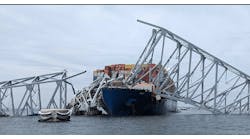Last year I posted a blog about safety—or the lack of it—in the workplace. It still draws responses from you bloggers out there. I noted a Kimberly-Clark survey of safety professionals in which 98 percent of respondents answered “yes” when asked if they had observed workers not wearing safety equipment when they should have been. Thirty percent of these respondents said this had happened on numerous occasions. The top workplace safety issue noted by all survey respondents was “worker compliance with personal protective equipment (PPE) protocols.”
David Waldeck responded to my post that he's been a tradesman for 35 years, and he's not surprised by this lack of a safety mindset among employees. He says safety is a learned system for most workers—and has been for him, as well. Sometimes it takes tough love from the company brass to send the safety message home.
“As I progressed through the various phases over the years, I've had to accept change as it is ‘forced' on today's workforce,” he wrote. “It's proven, though, that with positive training and some occasional negative feedback to those not willing to conform, eventually the crew will turn to wearing that gear instinctively. [Now] as a business owner paying workman's comp bills, it became increasingly clear that we had to start conforming. Most of today's businesses play it smart by ‘building in' time for safety in their bids for work. Most customers don't mind the extra expense as long as it improves workplace safety and decreases other overhead costs like insurance bills.”
Safety statistics are a dramatic way to get people's attention. That's why sellers of safety equipment and devices frequently resort to quoting numbers to help potential customers understand the connection between the use of their equipment and the return on investment.
For example, a recent press release from Kardex Remstar, makers of automated storage and retrieval systems, noted that there were 3,277,700 work related injuries and illness recorded by the U.S. Bureau of Labor Statistics in 2009. Of those cases, 1,238,490 required days away from work to recuperate. On top of that, the Occupational Safety and Health Administration (OSHA) says about a third of all recordable worker injuries each year result from ergonomic hazards, and that these injuries cost several billion dollars per year—accounting for about $1 of every $3 in workers' comp claims.
This company claims that by reducing worker compensation costs and improving productivity, the typical return on investment (ROI) of an AS/RS is 12 to 18 months.
But another blogger, David Stuart, has the right idea. Although investing in equipment and systems to increase safety is a good idea, the money will go to waste without investing the time necessary to have the safety message sink in. At Stuart's company, that means daily plant level safety meetings, including representatives from all operating and administrative units. The purpose of this meeting is to review safety or environmental incidents, discuss near-miss incidents and come up with root causes and corrective actions.
“These activities promote safety as a value within our organization,” he writes. “It's instilled in our culture. It is everyone's expectation to leave work in the same condition as one arrived.”
I hope those expectations are exceeded. They'd better be smarter, too.


